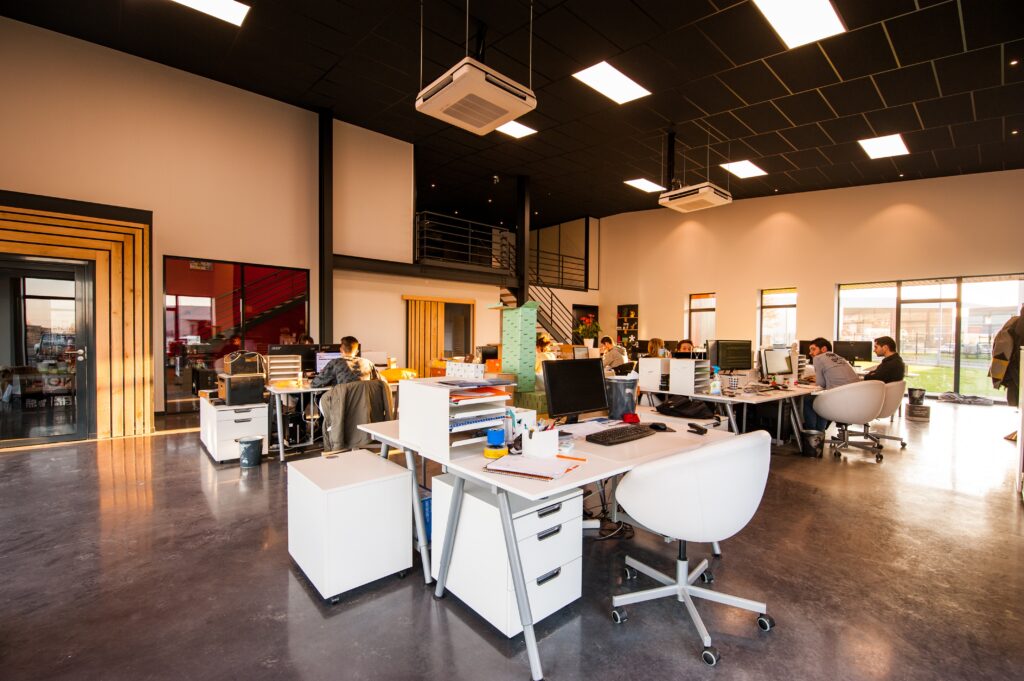Innocently enough, a co-worker of mine recently asked me about a meal replacement shake I was having for lunch. While I was explaining the finer points of the ingredients, another co-worker overheard our conversation from her desk in our open office space and chimed in. Moments later, another co-worker made a sarcastic comment about my lack of chewing food and how I was a robot. For the next 12 minutes, all four of us were engaged in a conversation completely unrelated to the work we do at Swift Kick. (But we did laugh a lot.)
While I don’t dispute the part about how I might be a robot, I do wonder if the concept of an open office space might do more harm than good.
Yes, we did bond during that conversation, but at what cost to productivity?
Harvard professor, Ethan Bernstein, dug into the research behind the “War on Walls” craze. He found the data to be less than promising. He found that face-to-face communication actually DECREASED 70% because co-workers opted to communicate via email and IM instead of verbally talking to a co-worker.
The promise of open office spaces was to bring people closer to each other in hopes of increased collaboration and collective intelligence. Access to technology has proven the opposite, however, as co-workers communicate more often via a screen versus in person, even when sitting near each other. Electronic communication actually increased 20-50% with open office spaces. Professor Bernstein’s study found that, “removing spatial boundaries can decrease collaboration and collective intelligence.”
From my experience with my team in our open office space, I’d add another hypothesis to Professor Bernstein’s research. Co-workers know that in an open office, communicating verbally means everyone else will also hear, and potentially chime in. As a result, the co-workers opt to send their message electronically, even if it takes longer and potentially reduces the value of the outcome. They don’t want to disrupt the work of others or be judged by their teammates.
Work disruptions are a serious problem for productivity. In Gary Keller’s book, The ONE Thing*, he shares research from Dr. David Meyer on work disruptions that states that, “It can range from time increases of 25 percent or less for simple tasks to well over 100 percent or more for very complicated tasks.”
The answer isn’t all open or all closed offices. With something in-between, team members have their own space to work uninterrupted, but also are available for collaborative conversations and social interactions.
Are you in an open working environment with your team? Here are my top two tips to stay productive while also staying socially connected to each other:
1) Headphones Equal “Do Not Disturb”
Make a team rule that if someone is wearing headphones, they are basically putting up a “Do not disturb” sign. If everyone knows this rule, they will respect it. If you need to talk to someone with headphones in, send them a message electronically.
2) Talk Away From Your Desk
Whether it’s social or business, take your one-on-one meetings away from your desk. Go into a meeting room or communal area. Treat the open office space like a work space, not a meeting room. If you want to talk to someone, move away from your desk.
The promise of collaboration and collective intelligence in an open office space might not have lived up to its hype. But with a few tweaks, your team might be able to enjoy the best of both worlds. Find ways to have the positive social interactions of an open space and stay productive without distracting the whole office.
